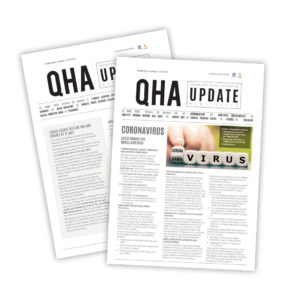The fourth Australian Human Rights Commission (AHRC) survey into sexual harassment experiences demonstrated a concerning increase in the prevalence of sexual harassment in the workplace, with 39% of women and 26% of men experiencing sexual harassment in the last five years. The likelihood was increased for Aboriginal and Torres Strait Islander workers and lesbian, gay, bi-sexual, transgender, queer or intersex workers. In 2018, Sex Discrimination Commissioner Kate Jenkins announced Australia’s first national inquiry into sexual harassment in Australian workplaces, and in March 2020, the AHRC released the Respect@Work Sexual Harassment National Inquiry Report (Report).
On 11 September 2021, the Sex Discrimination and Fair Work (Respect at Work) Amendment Act 2021 (Amendment Act) took effect, adopting six of the 55 recommendations from the Report. Notably, the Amendment Act:
- Extended the scope of the Sex Discrimination Act 1984 (Cth) (SD Act) to include all members of State and Federal Parliament, State and Territory public servants, Judges and their staff and consultants;
- Introduced definitions of ‘sexually harass’ and ‘sexually harassed at work’ into the Fair Work Act 2009 (Cth);
- Expanded the anti-bullying jurisdiction of the Fair Work Commission by allowing the Commission to make stop sexual harassment orders;
- Clarified that sexual harassment constitutes a valid reason for dismissal; and
- Extended the time in which a complaint can be made under the SD Act from six months to 24 months.
However, the Amendment Act did not adopt recommendation 17 of the Report, which recommended to:
‘Amend the Sex Discrimination Act to introduce a positive duty on all employers to take reasonable and proportionate measures to eliminate sex discrimination, sexual harassment and victimisation, as far as possible. In determining whether a measure is reasonable and proportionate, the Act should prescribe the factors that must be considered including, but not limited to:
- the size of the person's business or operations;
- the nature and circumstances of the person's business or operations;
- the person's resources;
- the person's business and operational priorities;
- the practicability and the cost of the measures; and
- all other relevant facts and circumstances.’
Recently, the Federal Attorney General confirmed Labor’s pre-election commitment to adopt all 55 recommendations of the Report, including to impose a positive duty on employers to prevent sexual harassment in the workplace, with possible exceptions for micro and smaller businesses.
Currently, the provisions of the SD Act, while prohibiting sex discrimination and sexual harassment, are only enlivened once the conduct has occurred. The implementation of a positive duty would demand a shift in an employer’s obligations under the SD Act from reactive to proactive measures. It is not yet clear what a positive duty would look like for employers, however, recommendation 17 largely reflects the positive duty provision in the Equal Opportunity Act 2010 (VIC), which states that ‘[a] person must take reasonable and proportionate measures to eliminate that discrimination, sexual harassment or victimisation as far as possible.’
To assist employers, the Victorian Equal Opportunity and Human Rights Commission has established the Preventing and responding to workplace sexual harassment - Complying with the Equal Opportunity Act 2010 guide, which sets out six minimum standards employers must meet to comply with their positive duty to eliminate sexual harassment. The six minimum standards are as follows:
- Knowledge: Employers understand the law relating to sexual harassment and the drivers and impacts of sexual harassment, and leaders and supervisors know how to identify and respond to sexual harassment in the workplace.
- Prevention plan: Employers have assessed the steps they will take to prevent sexual harassment and have a documented plan which workers and their representatives have had an opportunity to contribute to.
- Organisational capability: Expectations of workplace behaviours have been set, have been clearly communicated to workers and are modelled by leaders and supervisors. Additionally, employers have taken steps to ensure workers understand that sexual harassment and victimisation is against the law and encourage and support bystanders to act safely to respond to sexual harassment.
- Risk management: Employers have regularly identified and assessed risk factors for sexual harassment, including by seeking feedback from workers and have taken steps to minimise and control workplace risk factors.
- Report and response: A fair and confidential reporting and complaints procedure is established in consultation with workers, with the victim’s wellbeing prioritised and that the complaints procedure is clearly communicated to workers. Employers ensure that responses to complaints are timely and consistent with proportionate disciplinary outcomes.
- Monitoring and evaluation: Employers regularly collect and assess reporting and complaints data for trends and patterns, as well as regularly review and update sexual harassment prevention plans to drive continuous improvement.
The fifth AHRC survey into sexual harassment experiences is due to commence in the coming months, with the results likely to inform the government’s ongoing prevention efforts and strategies. With the government re-confirming its commitment to introducing a positive duty, employers should give serious consideration to:
- how sexual harassment might manifest in their organisation; and
- what practical controls and measures can be implemented to prevent and eliminate the risk of sexual harassment in the organisation.


